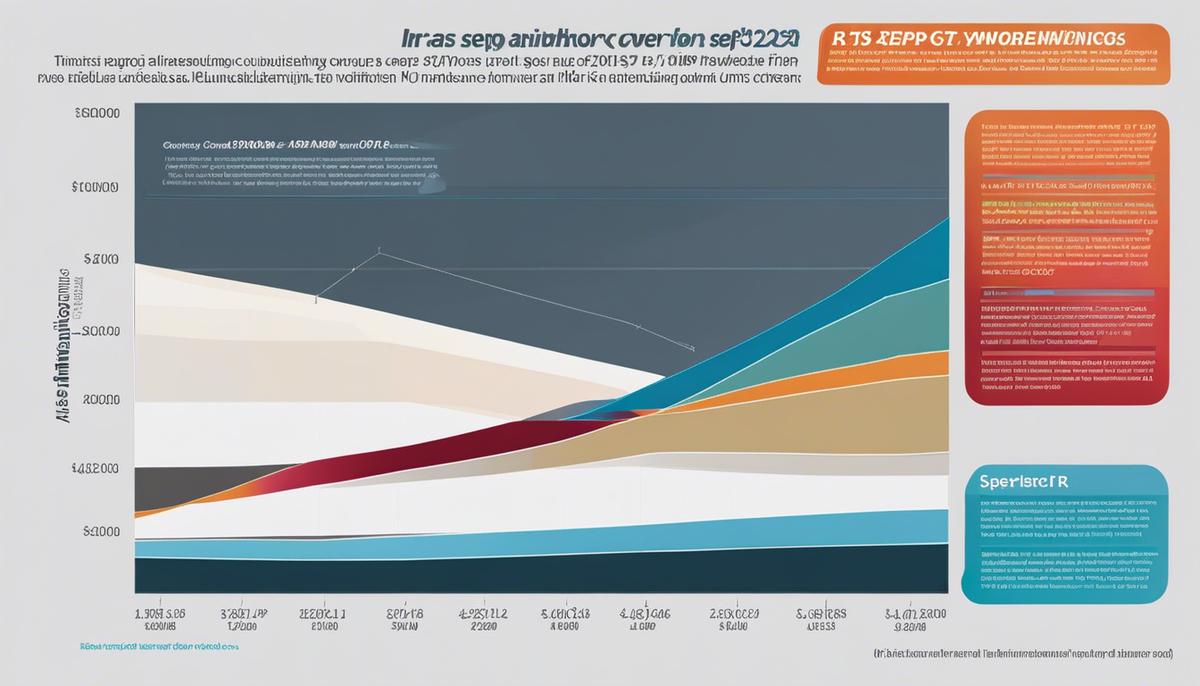Bolster Retirement: SEP IRA 2024 Contribution Limits
In an endeavor to foster financial security in retirement, choosing the right tools and strategies is essential. For entrepreneurs and small business owners, one such highly advantageous mechanism is the Simplified Employee Pension Individual Retirement Account (SEP IRA). A powerful retirement tool, SEP IRA offers unprecedented flexibility and tax advantages that can make a substantial difference in one’s financial future. Navigating the intricacies, however, can be complex, with yearly updates and strict Internal Revenue Service (IRS) governing rules. This paper aims to dissect the fundamental components of SEP IRA, its contribution rules, the forecasted limits for 2024, taxation implications, and its comparison with other IRA counterparts.
Understanding SEP IRA
Dive headfirst into the world of retirement planning and your path might cross with something called a SEP IRA. Sounds mysterious, right? Not for long. We’re about to break this down. In the world of entrepreneurship, knowing your way around finance isn’t just a suggestion — it’s a necessity.
So, what exactly is a SEP IRA? The words themselves stand for Simplified Employee Pension Individual Retirement Arrangement. A mouthful, indeed. This is not your average retirement plan. It’s designed specifically for entrepreneurs like you: the self-employed, small business owners, and those with freelance income.
Why is it special? Let’s delve in.
What sets a SEP IRA apart is that it allows significantly higher contribution limits than standard IRAs. We’re talking up to $58,000 in 2021! That’s about 10x the limit for standard IRAs. An added bonus is that it’s not just the employer who gets to relish these benefits; they extend to employees too. And here’s the kicker: only the business owner contributes to the plan, not the employees.
Tax benefits? Absolutely. The contributions made to a SEP IRA are tax-deductible, which might lower your taxable income when it’s time to file your taxes. The money grows tax-deferred until withdrawal, minimizing your tax liability and maximizing your potential for long-term growth.
But, the show doesn’t end here. There are more perks to unveil. SEP IRAs offer flexibility. There’s no requirement to make a contribution every year, unlike some complicated retirement plans. If your profits ebb and flow, this flexibility allows you to decrease or even skip a contribution during lean years.
Before we wrap up, let’s talk about the paperwork trail. Are you under the impression that tax advantages come hand in hand with endless paperwork? Think again. SET IRAs don’t have nearly as much paperwork as other retirement plans, making them appealing for business owners who’d rather focus on growing their businesses than being bogged down by bureaucracy.
In today’s dynamic business environment, it’s essential to stay ahead of the curve, create savings, and prepare for the future. Whether you’re a freelancer or own a thriving small business, building your nest egg with a SEP IRA could be a game-changer. With Its high contribution limits, tax perks, flexibility, and low paperwork, it fits the bill.
Remember, the key to successful entrepreneurship and savvy investing isn’t just about understanding where your money goes today, but also where it will be tomorrow. Don’t just ride the waves of business, master them. Choose smart, choose wisely. SEP IRA – your wealth-building partner!

SEP IRA Contribution Rules
While the simplicity and versatility of SEP IRA has already been acknowledged, it’s crucial to consider some notable regulations concerning its contributions to fully leverage its benefits. Navigating through these rules effectively can result in optimal tax savings and a more robust retirement income for business owners and their employees.
One pivotal regulation to comprehend is that SEP IRA annual contributions are exclusively employer-funded. Individual employees are not permitted to contribute to their SEP IRA accounts. This regulation is in stark contrast to other IRA types where individual contributions are commonplace.
Another fundamental regulation pertains to the principle of proportionality in contributions. If a business owner decides to contribute a certain percentage of their earnings to their SEP-IRA, they must replicate the same percentage of contribution for all employees who qualify.
Moreover, there is an eligibility criterion for employees to receive contributions. Regulations have outlined that participants must be at least 21 years old and have worked for the business in at least three of the last five years, earning a minimum “compensation” income, which is revised annually and stands currently at $650 for 2022.
A crucial yet often overlooked regulation elucidates the process of contribution calculation for self-employed individuals. While business owners may contribute up to 25% of their employees’ wages, when it comes to their contribution, the calculation is not so straightforward. This is because their net earnings are reduced by half of their self-employment tax and the plan contributions they make for themselves.
Now, an interesting and slightly complex regulation relates to the SEP IRA contribution deadlines. If you’re self-employed or running an unincorporated business, contributions can be made until your tax return due date, including extensions. For incorporated businesses, you have until the due date of your business’s tax return, including extensions, to fund the plan and take a deduction.
Lastly, one potential pitfall to carefully navigate is violating the “excess contribution” rule. If you make contributions over the permissible limit, the Internal Revenue Service (IRS) imposes a 6% tax annually for as long as the excess amount remains in your SEP IRA.
Understanding and adhering to these regulatory constraints is not merely compliance; it’s the key to maximizing your SEP IRA‘s potential. Through strategic planning and expert guidance, surpassing these obstacles could be an effortless mission. Always consult with a qualified tax or financial advisor to ensure you’re charting the most beneficial course for your retirement journey.

Photo by austindistel on Unsplash
SEP IRA Contribution Limits
When it comes to savvy financial planning, the contribution limits for a SEP IRA (Simplified Employee Pension Individual Retirement Account) is a tool of tremendous relevance. With the pressing matter of retirement on the horizon, understanding these limits could prove vital for achieving a financially secure future.
As 2024 is approaching, it’s essential to arm oneself with the knowledge of the adjusted contribution caps for SEP IRAs. In tune with an upward trend of past years, the contribution limit is expected to, once again, increase. This limit acts as the maximum amount that an employer can contribute to an employee’s SEP IRA each year. In 2024, the cap is projected to hit up to $61,000, or 25% of an employee’s compensation, whichever is less.
This tactical adjustment, rolling on the heels of escalating living standards and inflation, is a critical factor for businesses and their employees to consider in their retirement planning strategies. Employers who contribute at the cap exhibit a potent commitment to their employees’ retirements, a powerful incentive for talent acquisition and retention.
However, it’s not just a ‘contributions free-for-all’. There’s a compelling need to thread carefully, keeping within the constraints of the IRS (Internal Revenue Service) rules. Any contribution breaching the limits could lead to steep excise taxes. Thus, a deep understanding of these regulations, a sharp eye on the current limits, and prudent contributions are essential strategies for businesses to gain the fruitful benefits of a SEP IRA.
On a similar note, self-employed individuals also have the opportunity to contribute to their own SEP IRA. They must abide by a special rule for the calculation of these contributions. Their limit is based on ‘net earnings from self-employment’, which involves deducting one’s half of Self-Employment Tax before applying the equation for the contribution cap.
To another crucial point, a delay in contribution has its implications. Procrastinating beyond the tax filing deadline, including extensions could cause a loss of tax deductions for that year. Hence, understanding the urgency and applying it to one’s retirement strategy is paramount.
In conclusion, SEP IRAs are a potent tool in the arsenal for businesses and self-employed individuals striving to secure a robust financial future. Being aware of the 2024 contribution limits, the associated tax implications, and the necessity of timely deposits can steer your retirement savings plan in the right direction. With the IRS tweaking these limits annually, staying informed and adaptable is the game-changing knack for acing this monetary journey.
Always remember to consult a trusted financial advisor, particularly specializing in retirement planning, to ensure well-informed decisions. After all, as the saying goes, ‘Money saved is money earned.’

Impact on Taxation
Diving deeper into the tax implications of SEP IRA contributions, one of the standout peculiarities is how these contributions are deemed ‘tax-deductible’ for businesses. Essentially, this means that the contributions a business makes to a SEP IRA can be subtracted from its total income before determining the amount of tax payable. Given this delineation, a SEP IRA could provide significant tax savings for businesses, particularly those with higher taxable incomes.
Moreover, another tax-related advantage that arises from SEP IRA contributions, is that these contributions are not considered part of an employee’s earned income for the tax year. In other words, while the contributions will increase the total value of the employee’s retirement account, they won’t invite additional income taxes. This provides a dual benefit, offering a considerable incentive to employees in the form of a tax-free supplement to their income, while simultaneously reducing taxable business incomes as already discussed.
However, it’s critical to remember that while SEP IRA contributions provide these immediate tax benefits, they are not entirely tax-free. The taxation is merely deferred. The tax obligation shifts to the future, specifically when the individual begins making withdrawals from their SEP IRA during their retirement phase. These distributions are then taxed as ordinary income. Therefore, it’s important to understand that the tax benefit is primarily a matter of timing, not total tax exemption.
Another notable attribute of the SEP IRA is its capability to compound earned interest, dividends, and other returns on a tax-deferred basis. This can accelerate the growth of retirement savings, since the profits generated within the account aren’t reduced by yearly taxes.
While the tax advantages of a SEP IRA are significant for both employers and employees, there are potential penalties to be aware of. Early withdrawals, those made before the age of 59 1/2, are usually subject to a 10% penalty in addition to regular income taxes. Exceptions exist (medical costs, first-time home buying, etc.), but these should not be relied upon without detailed planning and professional advice.
Finally, it bears repeating that while this approach to retirement planning can provide significant financial benefits, it’s still best to consult with a professional tax or financial advisor. Understanding the full breadth and depth of tax law is beyond most individuals’ capabilities. Engaging expert guidance can not only avoid costly mistakes, but it can also reveal opportunities that otherwise may have been overlooked. Thinking longer-term and innovating for the future, as we do in so many other aspects of business, is key when plotting the course for financial stability in our golden years.

Comparing the SEP IRA with Other IRA Accounts
As impressive as a SEP IRA may be, one should not overlook the importance of comparison when it comes to retirement plans. The potentiality of other Individual Retirement Accounts (IRA) like the traditional IRA and Roth IRA should be examined as well, this business-skewed comparison serves to illuminate the plan that serves investor’s retirement ambition best.
Delineating the difference between these types of IRAs is crucial. For example, with Traditional and Roth IRAs, eligibility is not bound by employment status, these IRCs are open to individuals. The beauty of an SEP IRA is the benefit it grants to both self-employed individuals and small business owners. However, Traditional and Roth IRAs do not restrict one from contributing to their account, unlike the SEP IRA which solely grants the employer permission to funnel funds into the account.
Traditional and Roth IRAs are a preference for those who seek a personal contribution freedom. Granted, the contribution limit for Roth and Traditional IRAs is far less than that of a SEP IRA – peaking at $6.000 ($7,000 if aged 50 or older) for 2021. This is a sharp contrast to the $58,000 potentiality of an SEP IRA.
Where a Traditional IRA often collides with an SEP IRA lies within the confines of contribution tax deduction. While SEP IRA contributions are typically fully tax-deductible, Traditional IRA contributions may be limited or not at all deductible, contingent on the individual’s income level and whether they partake in a retirement plan within their workplace.
Contrasting these, a Roth IRA introduces a different playing field. Although contributions to a Roth IRA are not tax-deductible like both Traditional and SEP IRA contributions, criteria are met, withdrawals during retirement could be completely free of tax. That includes both the contributions made and the earnings grown. This lack of tax in retirement could be a powerful benefit for those planning strategically for their golden years.
Luckily, owning more than one type of IRA account is an option. Therefore, a Roth IRA can be combined with a SEP IRA, in agreeing with the contribution limits of both plans. This maneuver allows for both tax variety and flexibility in retirement income.
Evaluating between the SEP IRA, Traditional IRA, and Roth IRA – while looking at factors of contributions, tax implications, and eligibility requirements – helps to paint a felt picture of which plan may serve you, the business owner or employer, best in your venture towards a prosperous retirement. However, this analysis should not be taken as gospel. Do contact a fiscal advisor or retirement planner for more customized advice according to individual needs and future income predictions.
As the final bell tolls it becomes apparent that the journey to retirement security starts with understanding the numerous avenues to that endeavor. Despite policy intrigue, Individuals, business owners, and employers should prioritize choosing the retirement plan that best suits their circumstances and long-term financial objectives.

Choosing the right retirement plan is a monumental decision, bearing significant implications on one’s financial future and tax savings. Recognizing that, the discourse presented herein demystified the SEP IRA contribution landscape for 2024 and analyzed its various facets. Decoding the contribution rules, deciphering the tax impacts, and comparing SEP IRA with other popular retirement plans, the insights aimed to empower you with informed decision-making tools. Balancing entrepreneurship with prudent retirement planning may seem daunting, but with robust strategies like SEP IRA and a thorough understanding of its workings, you can build an enduring financial legacy.



Leave a Reply